For music lovers everywhere, a great song is an endless source of inspiration. Where do our favorite songs come from? Songwriting is the process of combining melody, lyrics, and chords into a unique musical creation. A great melodic hook can be stuck in your head for weeks or a meaningful lyric might help you cope with life's struggles. Good songwriting requires a basic grasp of harmony and melody to successfully express your ideas and capture the attention of your audience. The major harmonic scale is the foundation of harmony, and understanding its applications is essential for writing effective chord progressions and melodies that will make your song unforgettable.
THE MAJOR SCALE:
The major harmonic scale is a seven-note scale that is made up of a series of whole steps and half steps. There are 12 major scales each with its own key signature. For our example, we will use the C major scale because it is the major scale that contains only natural tones (no sharp or flat notes). Think about the white keys on a piano keyboard. These are your natural tones that cycle through the musical alphabet and each one is part of the C major scale. We will use diatonic harmony for all of the following examples which means that we will only use notes and chords found within the C major scale.
The C Major scale is:
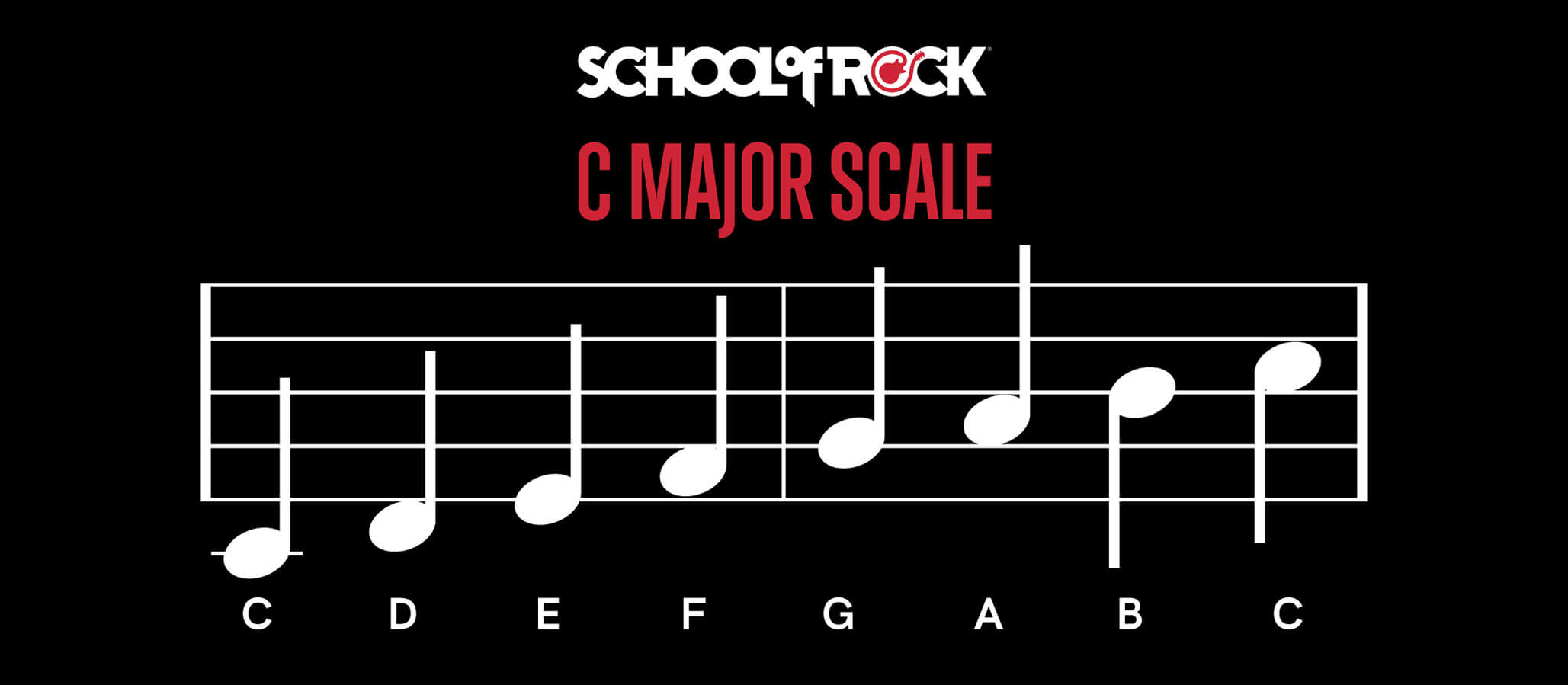
We can assign each of these harmonic scale tones a number that represents its position within the scale.
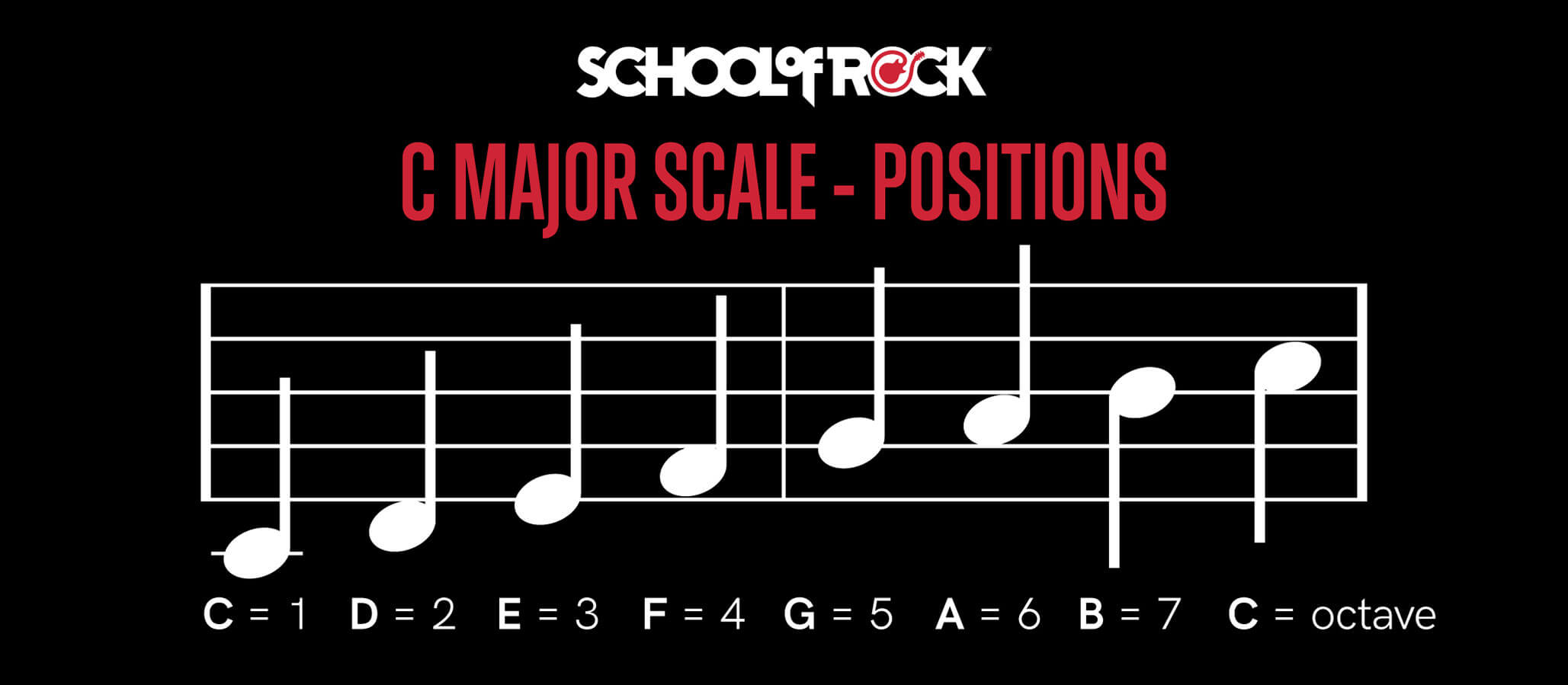
INTERVALS:
An interval is the distance between any two notes. In the C major scale, we would say the interval between C and D is a second, between C and E is a third, between C and F a fourth, and so on.
Each note has a specific function within the harmonic scale. We call the note C the tonic because it is the first note of the scale and the most important note in the creation of melody and harmony within the scale. The tonic is the tonal center of any given key and all of the other notes function in their relationship to the tonic. For example, the 5th note of this scale, G, is called the dominant. It is the second most important note of the scale and is used prominently in popular music. When we combine notes of the scale and play them together, we have created harmony, which is one of the basic building blocks of all music and a key element of songwriting. When we talk about harmony as songwriters, we are often talking about chords.
TRIADS:
A triad is a type of chord that contains three notes. We can use our major harmonic scale to create a series of triads that are unique to our key. In the key of C, we can begin with our tonic note, “C”, and create a triad by stacking other notes on top of it. This process can be called stacking thirds because the notes are all separated by an interval of a third. For instance, if we want to create a C major triad, we begin by adding the note E, which is a third above C. Then we add the note G, which is a third above E. Therefore, our C major triad contains the notes C, E, and G. These notes represent the 1st, 3rd, and 5th degrees of our major scale:
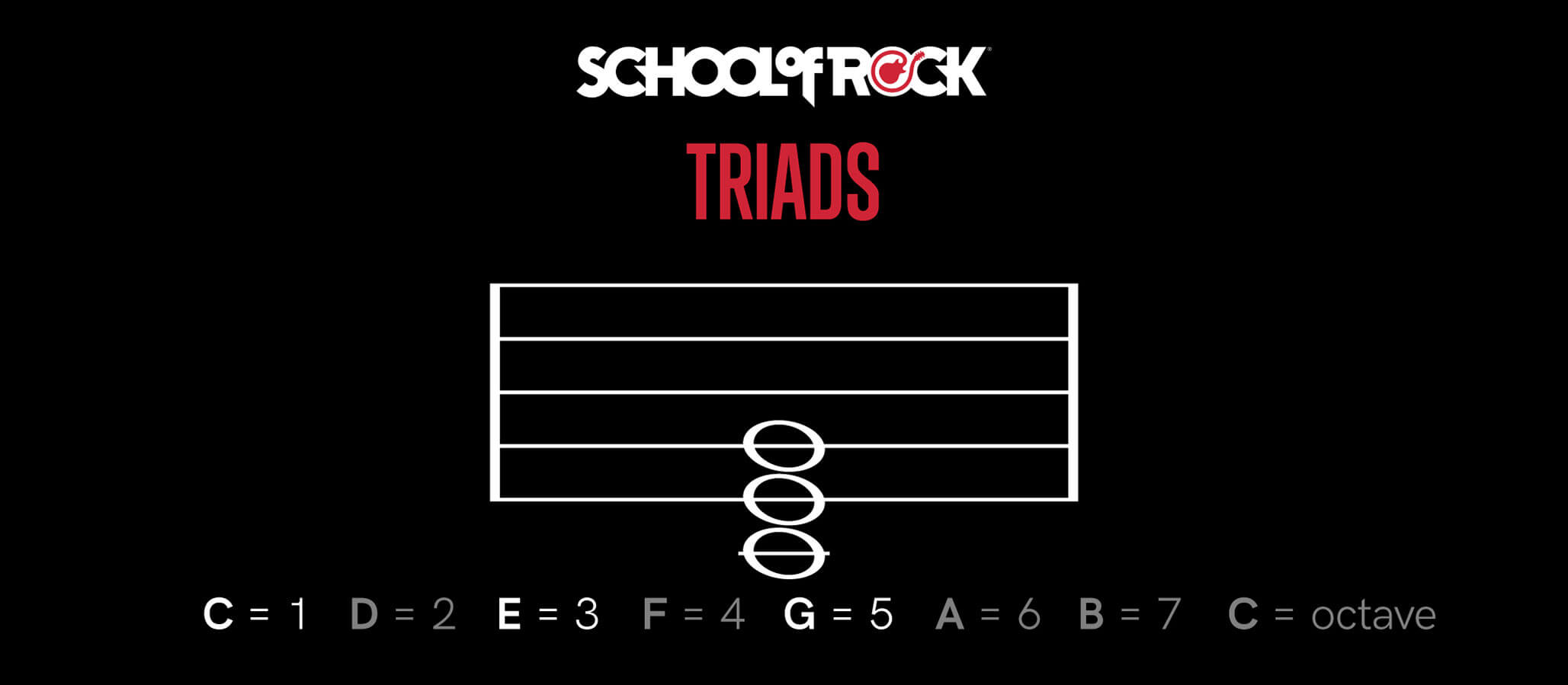
Once we have established this major chord, we can expand to create triads for each note of the harmonic scale. For the C major triad, we say that the root of the chord is C because it is the lowest note and the other notes are stacked above it. Let’s say we want to create a new chord with D as the root note. We would follow the same process and stack thirds above D. This gives us D, F, and A:
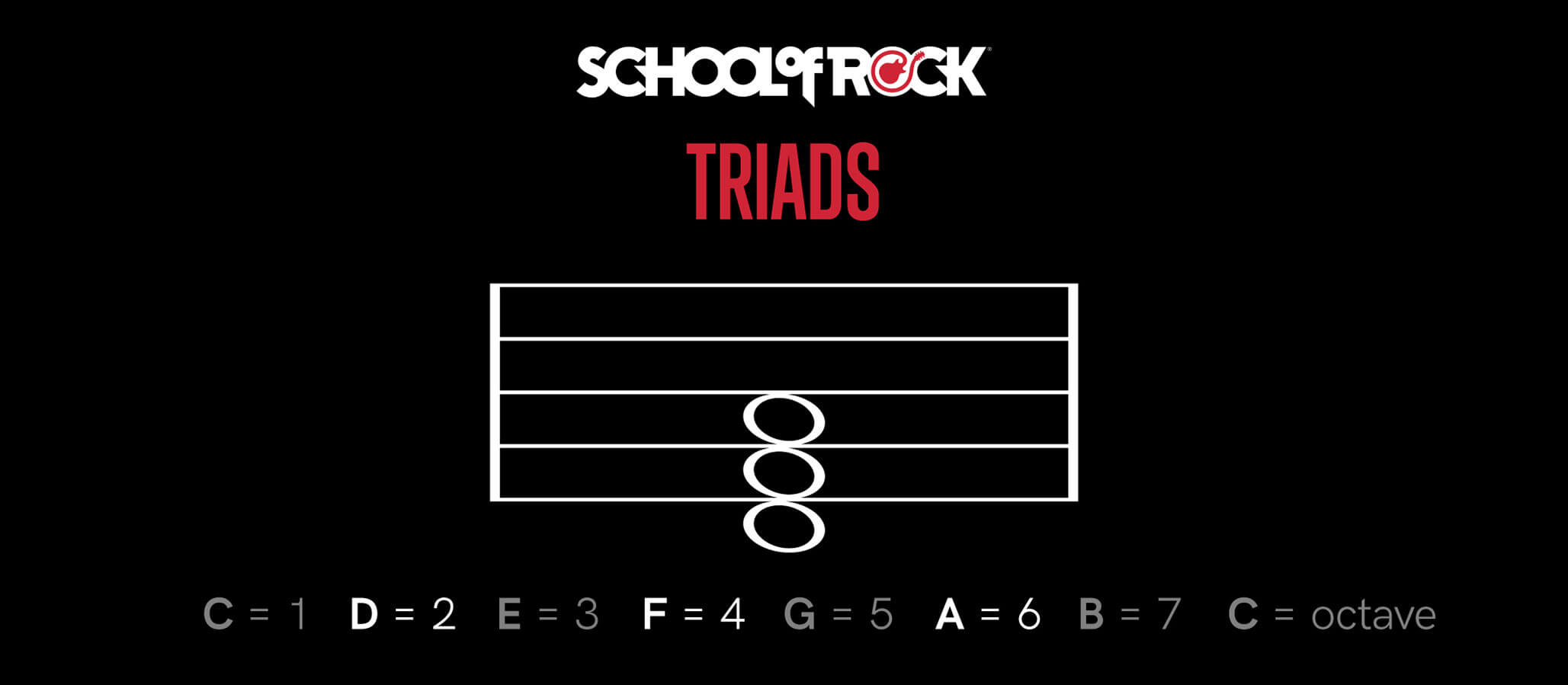
Notice that all of these triads have the same pattern and always skip a scale note in between the other notes of the triad chord. We repeat this same process to make each note of the C major harmonic scale the root of its own chord:
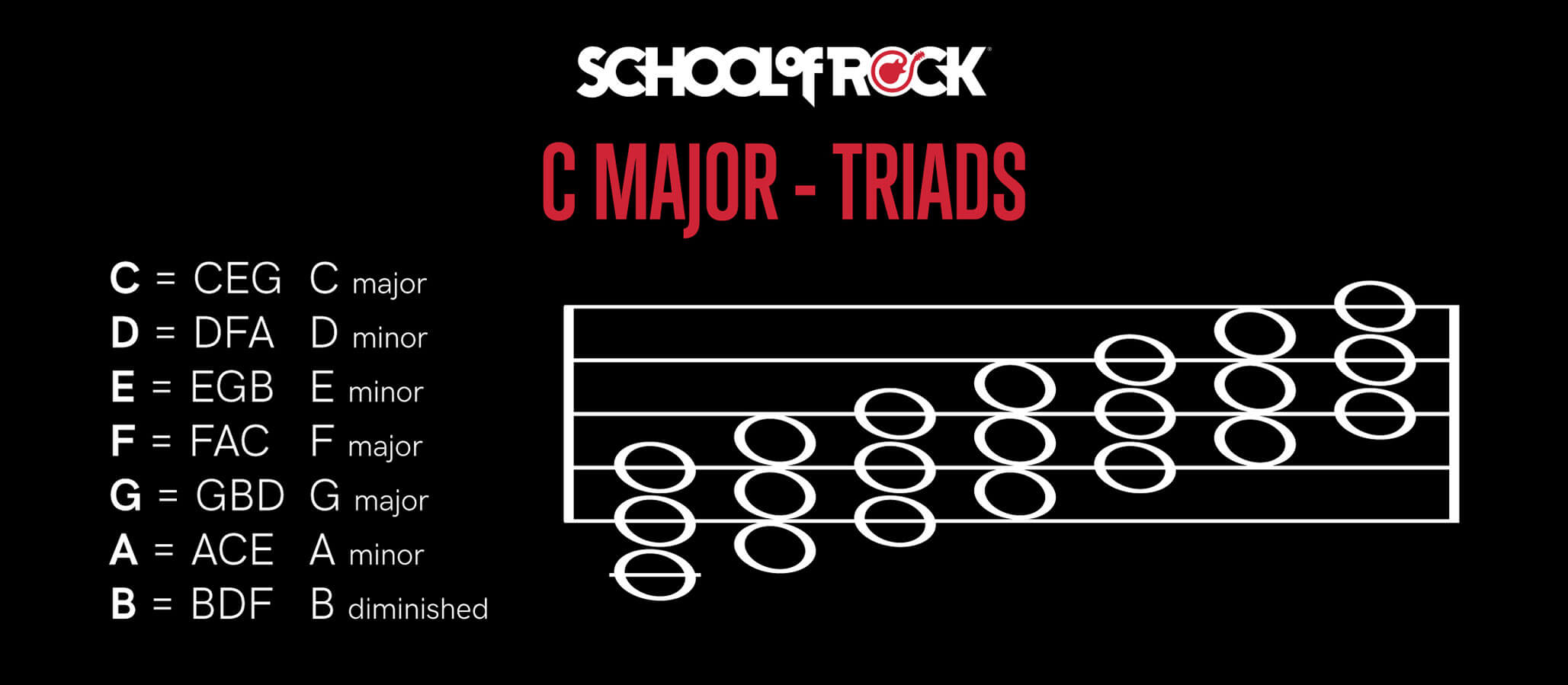
MAJOR CHORDS AND MINOR CHORDS:
The triad can have different qualities depending on the arrangement of half steps and whole steps that separate the notes. For many songwriters, the two most common types of triads are called major or minor. In every major key, there are three major triads, three minor triads, and one diminished triad. In the key of C major, the major triads are C (C E G), F (F A C), and G (G B D). The minor triads are D (D F A), E (E G B), and A (A C E). The diminished triad, B (B D F), is not commonly used in popular music but it serves its own function and is often found in jazz composition. As songwriters, we structure our songs to combine major and minor chords that evoke a certain mood and reflect the overall message of the song. In general terms, we say that major chords sound “happy” and minor chords sound “sad”, but these chords and their infinite combinations can produce a wide spectrum of emotional color.
CHORD PROGRESSIONS:
While methods of songwriting vary, a popular and time-tested practice is to begin with a chord progression. A chord progression is simply a sequence of chords that supports your melody. A strong chord progression might use different chords within the key to create a feeling of tension and resolution. Seasoned musicians will often use numerical shorthand to refer to the chords within a progression. Understanding this system can help expand your gifts as a songwriter and improve communication between a songwriter and other musicians. To illustrate this, we want to assign a number to each of the triads built on the major harmonic scale tones.
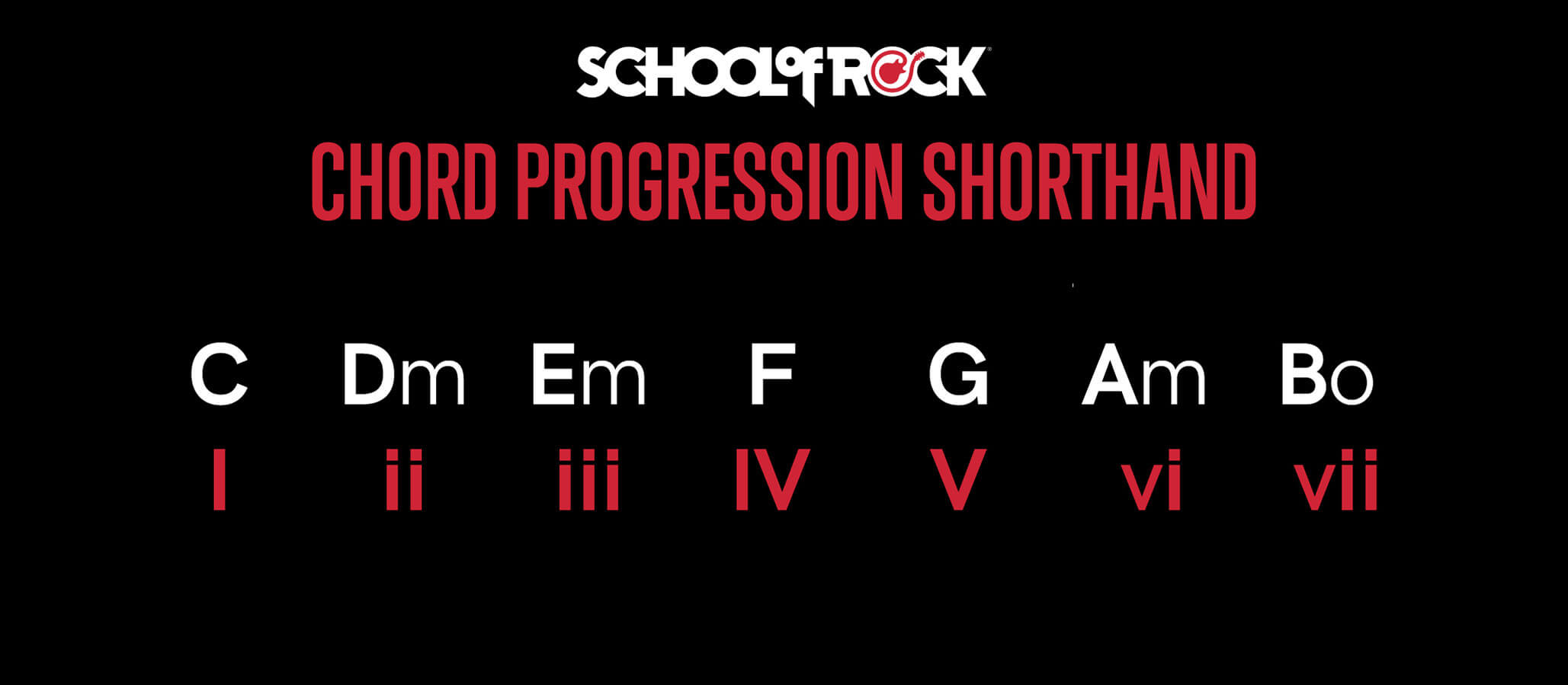
We use roman numerals to symbolize each chord built on the harmonic scale degrees. The uppercase numerals indicate a major chord while the lowercase numerals indicate minor chords. A common blues chord progression could be referred to as a I - IV - V or 1 - 4 - 5. This progression is used in countless rock and blues songs like Pride and Joy by Stevie Ray Vaughn, Three Little Birds by Bob Marley, and Wild Thing by The Troggs/Jimi Hendrix. Another very popular chord progression for contemporary rock and pop songs is I V vi IV. In the key of C, this would mean our chord progression is C, G, A minor, and F. This chord progression is at the heart of many of our most beloved songs including “Don’t Stop Believin’” by Journey, “When I Come Around” by Green Day, and “Let it Be” by The Beatles.
BEYOND C MAJOR:
Now that we understand the system that organizes our chords within a harmonic scale, we can use our numerical system to change keys and utilize a variety of different chords and chord progressions to expand our musical palette. Here is the E major scale, a popular key for guitar players:
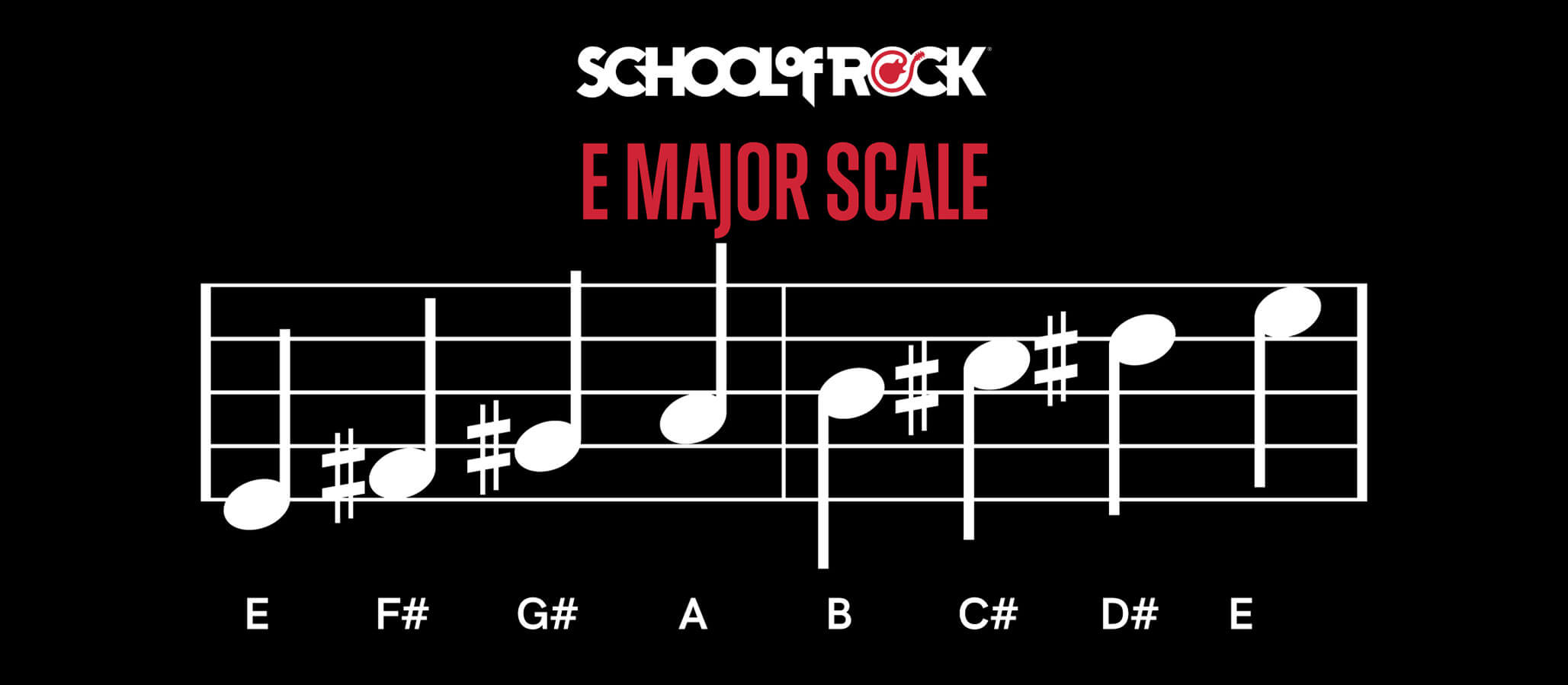
Notice that this harmonic scale differs from C major because 4 of the notes are sharp notes. This gives the scale a completely different sound and also provides us with a new set of chords:
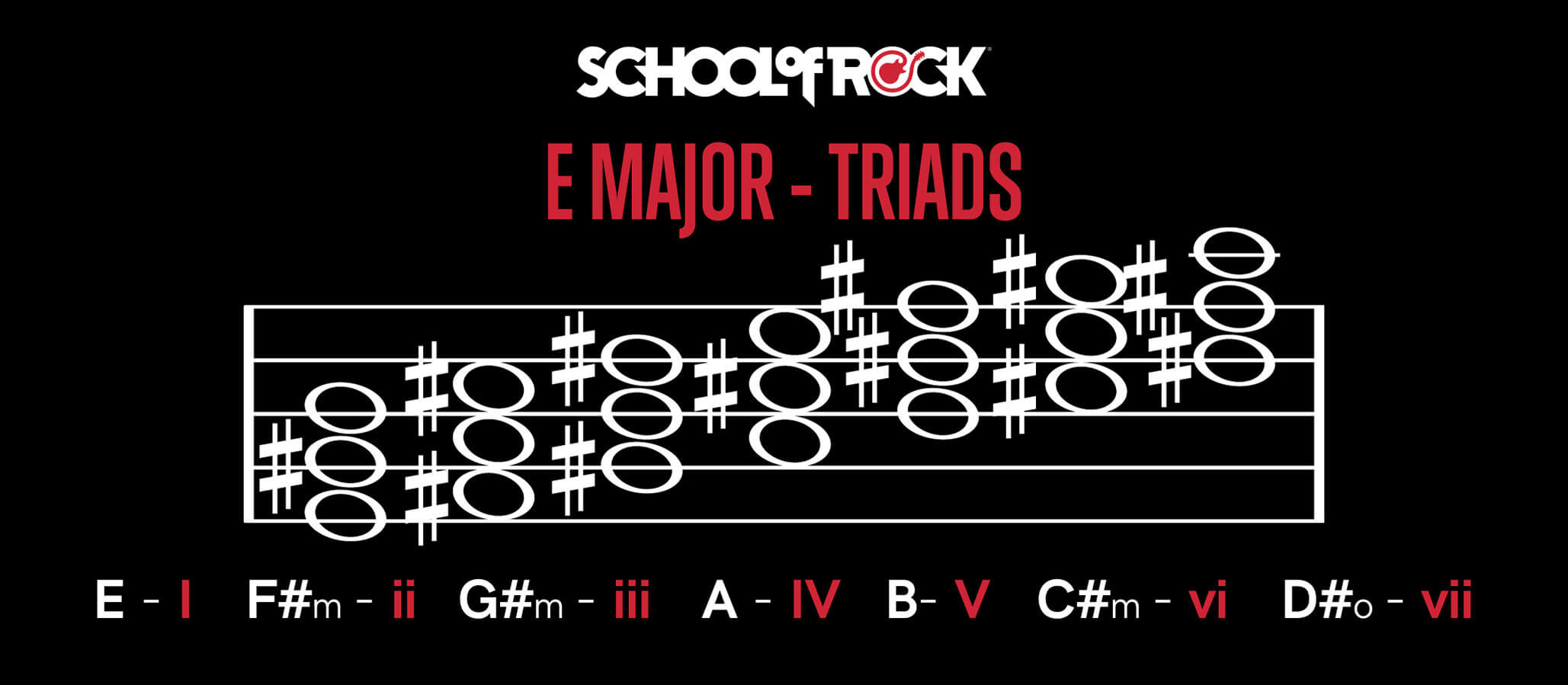
Using the same formula as the C major scale, we now have 7 new chords that we can use to compose in the key of E major. We can repeat this process in any of the 12 major keys to find all of the major and minor triads. Writing in different keys can transform your songwriting by exploring the different tonal colors that each key and each chord has to offer.
The major harmonic scale is the key to our musical toolbox as songwriters. But there are many other skills to develop with melody, lyrics, and chords on our way to becoming expressive and knowledgeable songwriters. The School of Rock Songwriting program is designed to teach students the fundamentals of songwriting, arranging, and performance in an interactive group-class setting. Through exercises, activities, and hands-on experiential training, students will learn to articulate and express creative ideas while writing, arranging, and performing their own original songs.
About the Author
Chris Brunelle is a Music Director at School of Rock Attleboro and brings a passion for education and more than 20 years as a professional musician. He is active in the Providence and Boston music communities, freelancing as an arranger/producer, vocalist, guitarist, and saxophonist. He also continues to write, record and perform music with The Sterns (a band he formed in 2003 in Boston) and his solo project, The Deadly Desert.



